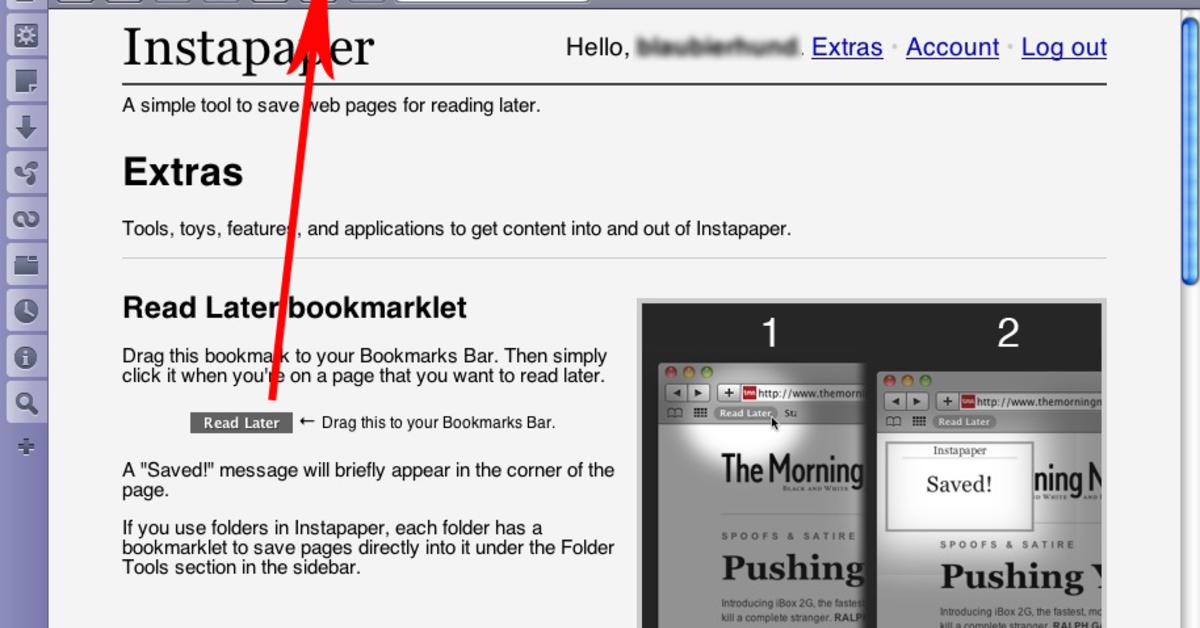
/cdn.vox-cdn.com/assets/1031048/Instapaper_4.1.1_iPad_iPhone.jpg)
I would actually copy and paste articles from the internet into text documents, and then use various apps to read those text documents. I started buying my first PDAs and smartphones back in the early 2000s, and I immediately began trying to hack together a way to read long-form articles on these mobile devices. Each app has its own strengths and weaknesses, and Pocket has some features that could make it the ideal app for some use cases, but Instapaper is our favorite app for actually reading the best writing on the web … later.

In the read-it-later space, the two dominant players have long been Instapaper and Pocket. These rivalries are great for consumers because each application is forced to hone its own approach and polish its unique features.
Instapaper mac app software#
The research was conducted on Instapaper Version 4.1.4 (version code: 46).The world of software occasionally produces fruitful rivalries between applications that try to solve the same problem with different approaches: Omnifocus vs. Note: This article is based on technical information provided courtesy of Vlad Bordianu, Bitdefender Researcher.
Instapaper mac app android#
We have notified the development team behind the Android Instapaper app about the found vulnerability, but they have yet to confirm when a fix will become available. Studies have shown that more than 50% of users reuse the same password, so the chances are better than even that more than one account could be vulnerable if your Instapaper credentials have been stolen.
Instapaper mac app password#
A cybercriminal could try and use your Instapaper password to access your social media or email accounts. While the attacker might seem to only gain access to your Instapaper account, most people use the same password for multiple accounts. Our experiment involved using a MitM proxy that could intercept the broadcasted Instapaper credentials, as shown below: If a user were to sign into his account while connected to a Wi-Fi network that’s being monitored by an attacker, his authentication credentials (both username and password) could easily be intercepted using any a fake certificate and a traffic-intercepting tool. In other words, if there is no implementation for TrustManager, anyone can impersonate the Instapaper server and start collecting authentication credentials via a man-in-the-middle attack.

The TrustManager checks whether the specified certificate chain can be validated and is trusted for client/server authentication for the specified authentication type. The implementation of this class is particularly important as it enables server authentication and guarantees communication between user and server is encrypted and cannot be viewed in plain text by traffic-sniffing tools. The SSLSocketFactory class is responsible for validating the HTTPS server against a list of certificates and validating the authenticity of the HTTPS server using a private key. The application sets a SSLSocketFactory and uses a TrustManager without having any implementation for certification validation. If someone were to perform a man-in-the-middle attack, he could use a self-signed certificate and start “communicating” with the application. However, the vulnerability lies not in the way the application fetches content, but in the way it implements (or in this case, doesn’t implement) certificate validation.Īlthough the entire communication is handled via HTTPS, the app performs no certificate validation. Everyone who wants to use the application is required to sign-up and create an account to check out notes, liked articles or access other options. The application works by saving most web pages as text only and formatting their layout for tablets or phone screens. Instapaper allows users to save and store articles for reading, particularly for when they’re offline, on the go, or simply don’t have access to the Internet. The vulnerability may have serious consequences, especially if users have the same password for more than one account, leaving them potentially vulnerable to intrusions. The Bitdefender Research team analyzed popular Android app Instapaper and found it can be vulnerable to man-in-the-middle attacks that could expose users’ signup/login credentials when they try to log in into their accounts.


 0 kommentar(er)
0 kommentar(er)
